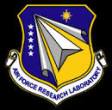AFRL posts funding opportunity for Multi-INT Enhanced Exploitation and Analysis Tools
 On September 25, the Air Force Research Laboratory posted the following broad agency announcement for Multi-INT Enhanced Exploitation and Analysis Tools (E2AT). For funding in FY 2017, the agency recommends that white papers be received by March 1, 2016.
On September 25, the Air Force Research Laboratory posted the following broad agency announcement for Multi-INT Enhanced Exploitation and Analysis Tools (E2AT). For funding in FY 2017, the agency recommends that white papers be received by March 1, 2016.
The Information Directorate, Activity Based Analysis Branch of the Air Force Research Laboratory (AFRL), Rome Research Site, is soliciting white papers through this Multi-INT Enhanced Exploitation and Analysis Tools (E2AT) announcement. E2AT is focused on the improvement of operator-exploited sensor analytical performance for Command, Control, Communications, Computers, Intelligence, Surveillance, and Reconnaissance (C4ISR) systems like the Distributed Common Ground System (DCGS) that operate within a Multiple-Intelligence (Multi-INT) environment.
The advances made under E2AT will assist in operating under Anti-Access / Area Denial (A2/AD) conditions where limitations can degrade C4ISR capabilities. Multi-INT solutions are to be accomplished through the development of innovative technologies that will assist warfighting teams in target tracking and identification, dynamic information annotation, and achieving a high-level information fusion all-source situation awareness. E2AT development is comprised of two complimentary technical areas (TAs): (TA1) Full-Motion Video Exploitation (FMVE) which is an exploitation enhancement that has a focus on video and text source integration and (TA2) Multi-INT Data Association (MIDA) that has its emphasis on overcoming anticipated Anti-Access / Area Denial (A2/AD) conditions.
E2AT is composed of two technical areas (TAs): TA1 – Full Motion Video Exploitation (FMVE) and TA2 – Multi-INT data association (MIDA) for A2/AD. The E2AT goal is to demonstrate end-to-end combined multi-INT physics-based and human-based annotated products to enable enhanced analyst performance. TA1 focuses on a permissive environment that seeks solutions to physics-based (e.g., exploited video) to human-based (e.g. chat, call-out transcription) annotations for operators. Extending multi-INT association, T2A focuses on human-based (e.g., document content extraction) to physics-based (e.g., standoff radar tracks) associations for analysts supporting an A2/AD environment.
Full information is available here.
Source: FedBizOpps







